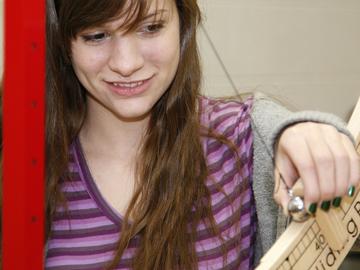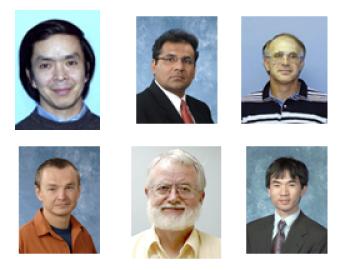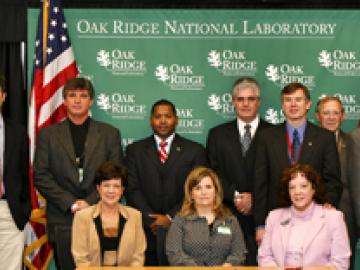
Filter News
Area of Research
Date
News Topics
- 3-D Printing/Advanced Manufacturing (16)
- Advanced Reactors (3)
- Artificial Intelligence (25)
- Big Data (13)
- Bioenergy (11)
- Biology (13)
- Biomedical (6)
- Biotechnology (5)
- Buildings (13)
- Chemical Sciences (15)
- Clean Water (4)
- Climate Change (21)
- Composites (6)
- Computer Science (24)
- Critical Materials (6)
- Decarbonization (21)
- Education (1)
- Emergency (1)
- Energy Storage (9)
- Environment (20)
- Exascale Computing (7)
- Fossil Energy (3)
- Frontier (8)
- Fusion (6)
- Grid (9)
- High-Performance Computing (17)
- Isotopes (11)
- ITER (1)
- Machine Learning (9)
- Materials (14)
- Materials Science (16)
- Mathematics (4)
- Microelectronics (1)
- Microscopy (2)
- Nanotechnology (2)
- National Security (18)
- Net Zero (6)
- Neutron Science (10)
- Nuclear Energy (10)
- Partnerships (14)
- Physics (5)
- Polymers (5)
- Quantum Computing (11)
- Quantum Science (12)
- Security (2)
- Simulation (14)
- Space Exploration (3)
- Statistics (2)
- Summit (6)
- Sustainable Energy (20)
- Transportation (12)
Media Contacts

Electric vehicles can drive longer distances if their lithium-ion batteries deliver more energy in a lighter package. A prime weight-loss candidate is the current collector, a component that often adds 10% to the weight of a battery cell without contributing energy.

Jack Orebaugh, a forensic anthropology major at the University of Tennessee, Knoxville, has a big heart for families with missing loved ones. When someone disappears in an area of dense vegetation, search and recovery efforts can be difficult, especially when a missing person’s last location is unknown. Recognizing the agony of not knowing what happened to a family or friend, Orebaugh decided to use his internship at the Department of Energy’s Oak Ridge National Laboratory to find better ways to search for lost and deceased people using cameras and drones.

The 21st Symposium on Separation Science and Technology for Energy Applications, Oct. 23-26 at the Embassy Suites by Hilton West in Knoxville, attracted 109 researchers, including some from Austria and the Czech Republic. Besides attending many technical sessions, they had the opportunity to tour the Graphite Reactor, High Flux Isotope Reactor and both supercomputers at ORNL.









